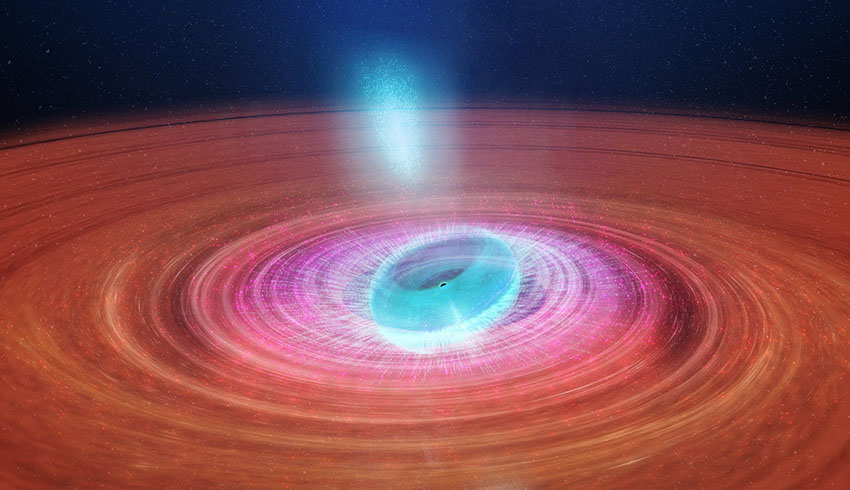Data from ESA’s Integral high-energy observatory have helped shed light on the workings of a mysterious black hole found spitting out ‘bullets’ of plasma while rotating through space.
The black hole is part of a binary system known as V404 Cygni and is sucking in material from a companion star. It is located in our Milky Way, some 8,000 light-years away from Earth, and was first identified in 1989, when it caused a huge outburst of high-energy radiation and material.
After 26 years of dormancy, it woke up again in 2015, becoming for a short period of time the brightest object in the sky observable in high-energy X-rays.
Astronomers from all over the world pointed their ground and space-based telescopes towards the celestial object, and discovered that the black hole was behaving somewhat strangely. A new study, based on data collected during the 2015 outburst, has now revealed the inner workings of this cosmic monster. The results are reported in the journal Nature.
Simone Migliari, an astrophysicist at ESA, said, "During the outburst we observed details of the jet emissions when material is ejected at a very high speed from the vicinity of the black hole."
Usually astronomers see the jets shooting straight out from the poles of black holes, perpendicular to the surrounding disc of material that is accreted from the companion star.
"We can see the jets shooting out in different directions on a timescale of less than an hour, which means that the inner regions of the system are rotating quite fast," Migliari added.
Previously, there had only been one black hole observed with a rotating jet. It was, however, rotating much slower, completing one cycle in about six months.
Meanwhile, high-energy X-ray data from Integral and other space observatories helped them decode what was happening at the same time inside the inner region of the 10 million-kilometre-wide accretion disc. This was important since it is the mechanics of the disc that causes the jet’s strange behaviour.
Lead author for the paper, associate professor James Miller-Jones from ICRAR, explained, "What’s different in V404 Cygni is that we think the disc of material and the black hole are misaligned.
"This appears to be causing the inner part of the disc to wobble like a spinning top that is slowing down, and fire jets out in different directions as it changes orientation."
During the outburst, a large amount of the surrounding material was falling into the black hole at once, temporarily increasing the accretion rate of disc material towards the black hole and resulting in a sudden surge of energy. This was seen by Integral as an abrupt increase of the X-ray emission.
Scientists have been studying what caused this strange misalignment. One possibility is that the black hole spin axis may have been tilted by the ‘kick’ received during the supernova explosion that created it.

